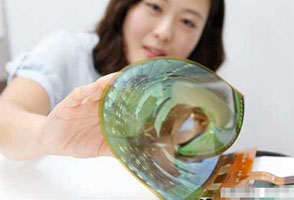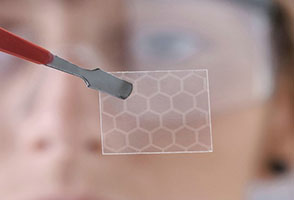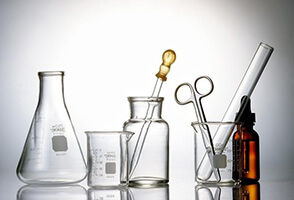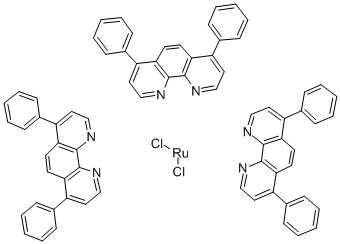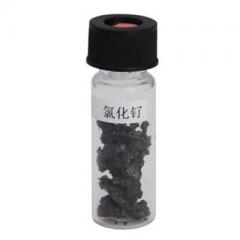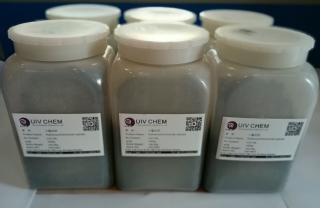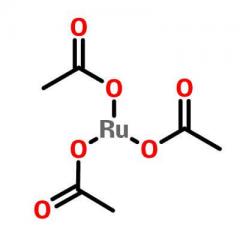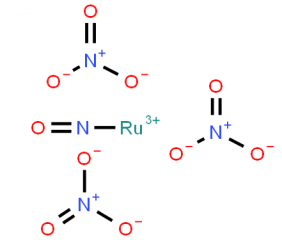| Identification | ||
| Name |
|
Tris(4,7-diphenyl-1,10-phenanthroline)ruthenium dichloride |
| Synonyms |
|
Tris(4,7-diphenyl-1,10-phenanthroline)ruthenium(II) chloride BATHOPHENANTHROLINE RUTHENIUM CHLORIDE BATHOPHENANTHROLINE RUTHENIUM DICHLORIDE |
|
|
||
| Molecular Structure |
|
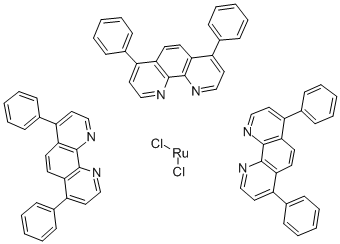
|
|
|
||
| Molecular Formula |
|
C72H48N6Ru.2Cl |
| Molecular Weight |
|
1169.19 |
| CAS Registry Number |
|
36309-88-3 |
| Properties | ||
|
Flash point |
|
>110°C |
|
Solubility |
|
DMF: soluble |
| Melting point |
|
275-279° |
| Safety Data | ||
| Risk Codes |
|
34 |
|
Safety Description |
|
24/25 |
|
Dangerous Transport Code |
|
3261 |
Tris(4,7-diphenyl-1,10-phenanthroline)ruthenium dichloride Uses:
Tris(4,7-biphenyl-1,10-phenanthroline) ruthenium dichloride (Ru(dpp)) and tris(4,7-biphenyl-1,10-phenanthroline) ruthenium hexafluorophosphate (Ru(dpp)3(PF6)2) is widely used as a probe for luminescence detection and oxygen quantitative determination. The fluorescence of the two dyes (absorption λmax455nm, Chemicalbook luminescence λmax613nm) is significantly weakened by molecular oxygen due to dynamic quenching. Therefore, it is an effective oxygen probe based on intensity or decay time measurement. Tris(4,7-biphenyl-1,10-phenanthroline) ruthenium dichloride has been used in (fiber) light sensors, research of oxygen in skin and dermatoma, measurement of oxygen flux in skin, and oxygen imaging

